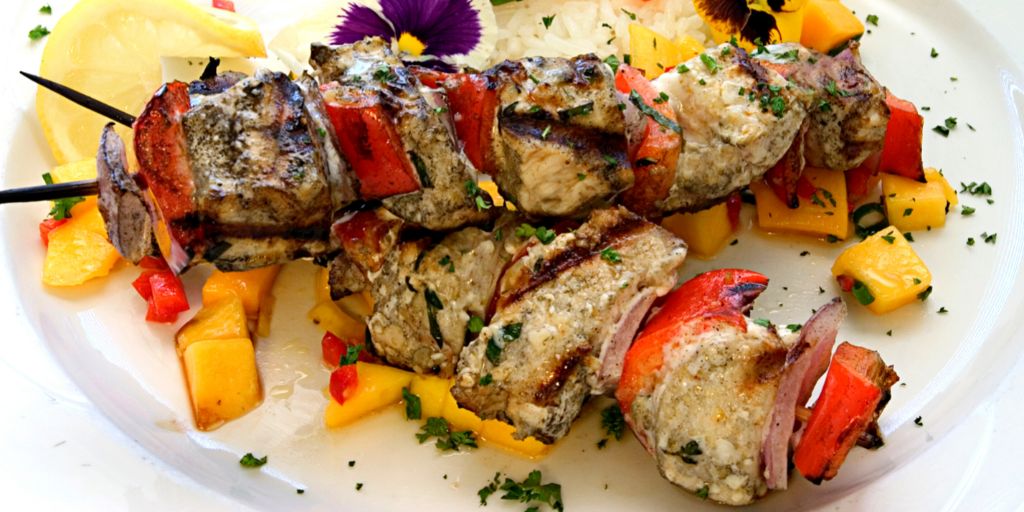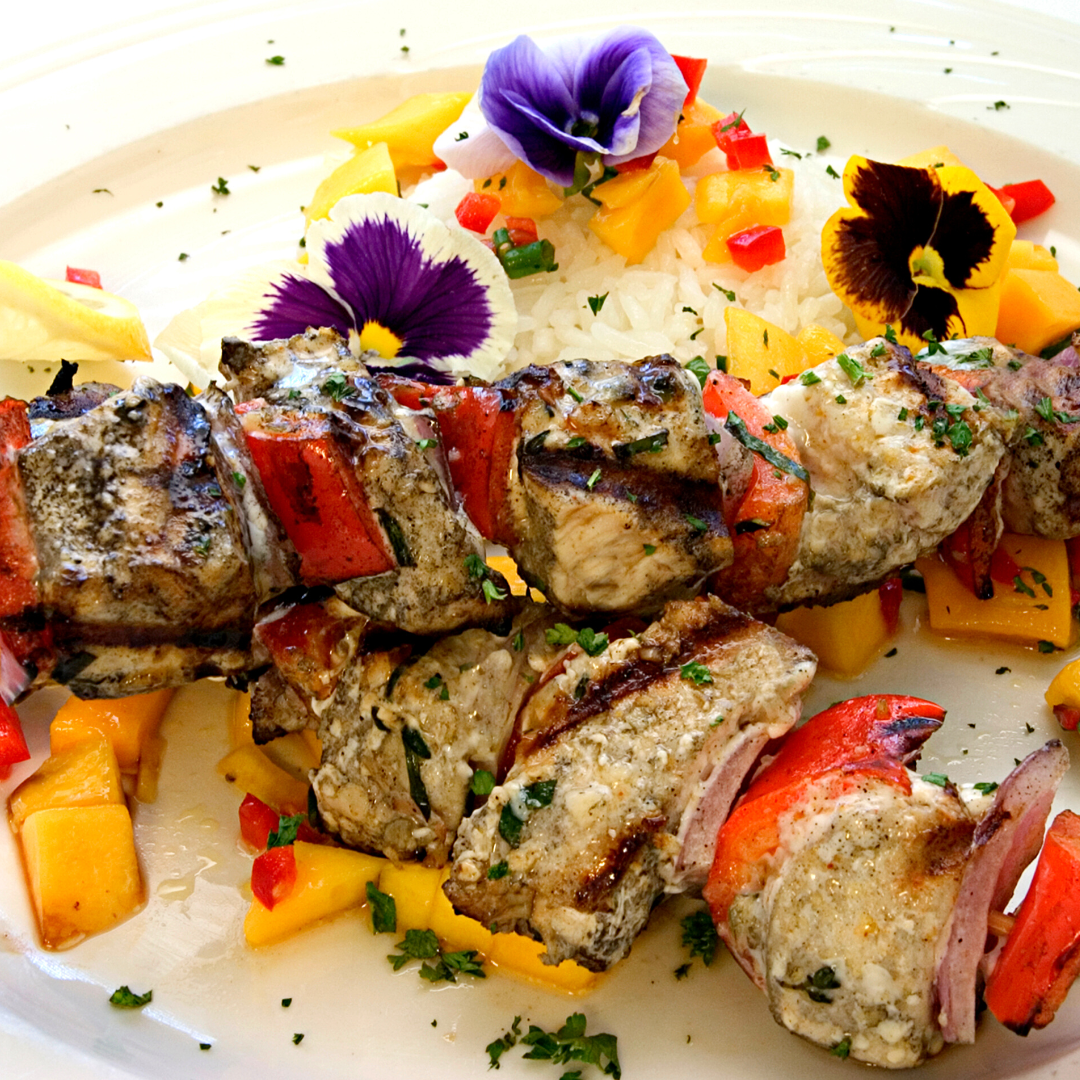
Barb Szyszkiewicz reviews a new Catholic cookbook, Dining with the Saints, which includes several dozen meatless recipes.
The new cookbook by Fr. Leo Patalinghug and Michael P. Foley, Dining with the Saints: The Sinner's Guide to a Righteous Feast, is perfect for any Catholic family or foodie who loves to find ways to celebrate the saints with a delicious meal or treat.

I went through quite a few post-it notes as I read this cookbook, marking recipes I want to try—and this cookbook is a terrific read. As you'll see in the publisher's excerpt below, the recipes include a capsule bio of a saint as well as some "Food for Thought," a call to action and prayer inspired by that saint's life and work. This is definitely a winning combination.
Dining with the Saints is not a specifically meatless cookbook, but I counted at least three dozen meatless recipes in here (not including the desserts or treats), out of more than 200 total recipes. In addition to the listings for feast days (organized in chapters by month), there are chapters with recipe ideas for Ember Days, Advent, the Twelve Days of Christmas, Epiphany, Mardi Gras/Carnival, Lent, and Eastertide.
It should be noted that the recipe listings follow the 1962 Roman calendar, so if you follow the newer Roman calendar, you'll need to refer to the appendix at the back of the book, which includes a table of dates for feast days. I found this workaround easy to follow and appreciated that both calendars were accommodated in this way.
Unlike other saint-related cookbooks I've checked out, Dining with the Saints includes simple recipes that don't require gourmet-level cooking skills or hard-to-find ingredients. There are substitution suggestions and cooking tips included, and I found the recipe directions to be easy to follow. For example, in recipes calling for fresh lemon juice, not only is the number of lemons indicated, but also the required yield—so you can easily adjust if your lemons are larger or smaller than average. Little touches like this speak to author Fr. Leo Patalinghug's skill as a cook.
My only wish is that the book contained photos of the finished dishes. I like to know how a new recipe is supposed to turn out. There is great art depicting each featured saint or something about them, but nothing related to the recipes themselves.
Ask for Dining with the Saints at your local Catholic bookseller, or order online from Amazon.com or the publisher, Regnery.
The publisher of Dining with the Saints graciously allowed us to reprint a Meatless Friday recipe for our readers. The feast of Saint Januarius (San Gennaro) is celebrated on September 19, but you can enjoy this dish at any time of the year!
St. Januarius
Little is known of the life of this fourth-century martyr and bishop of Benevento (d. 305), but much is known about his posthumous career. According to the Roman martyrology, after Saint Januarius was beheaded, his body was brought to Naples “and there honourably interred in the church, where his holy blood is kept unto this day in a phial of glass, which being set near his head becomes liquid and bubbles up as though it were fresh.” The head and the dried blood are brought together several times a year (including on today’s feast), egged on by a group of poor women known as the zie di San Gennaro (aunts of Saint Januarius) who “make themselves specially conspicuous by the fervour, and sometimes, when the miracle is delayed, by the extravagance, of their supplications.” When even the saint’s melodramatic aunts cannot convince him to effect the desired miracle, impending disaster is predicted. In 1941, when the dry red powder in the phial failed to liquefy, Mount Vesuvius erupted. Another time, when liquefaction did not occur and Vesuvius began to rumble, twenty thousand pilgrims processed up the volcano with Saint Januarius’s skull. Their prayers were heard, and the lava ceased flowing.
This skewered swordfish is a fine example of the seafood flavors of Naples, where San Gennaro shepherded his people. And the red chili pepper oil reminds us of the blood that was shed for his faith that usually liquefies on his feast day.
San Gennaro Pesce Spada Spiedini
Serves: 4 Cooking time: 40 minutes
2 lbs. filets of swordfish
2 Peppadew peppers, deseeded and minced
2 serrano chilis, deseeded and minced
2 tsps. salt, divided
1 tsp. garlic powder
2 Tbsps. olive oil, divided
1 tsp. dried oregano
1 lemon, zested and juiced
4 wooden skewers
- Soak 4 skewers in water.
- Cut the swordfish into 1-inch cubes and place in a bowl.
- Season the fish with the garlic powder, 1 tsp. of the salt, 1 Tbsp. of the olive oil, and the lemon zest.
- Make the chili oil: In a separate bowl, combine the Peppadew peppers, serrano chilis, oregano, lemon juice, and the remaining 1 tsp. salt and 1 Tbsp. olive oil. Mix together and set aside.
- Divide the fish cubes into four equal parts, impale a quarter of the cubes on the first skewer, packing the cubes tightly together, and repeat for the other three skewers.
- Heat a grill pan over high heat and lightly brush it with olive oil.
- When the grill pan begins to smoke, lower the heat to medium, place the skewers of fish onto the pan, leaving some space between the skewers, and cook for 2 minutes on each side.
- After all sides of the fish show some grill marks, remove the skewers from the pan and set them on a plate.
- Spoon the chili oil directly onto the skewers of fish and serve immediately.
FOOD FOR THOUGHT
Many people think of Christian martyrdom as a thing of the distant past, but there were more Christians killed for their faith in the twentieth century (more than one million, in fact) than in all previous centuries combined. In the contemporary Western world, we do not usually live under the threat of martyrdom, but we do experience a type of soft martyrdom when people try to “cancel” us for our beliefs. Tonight, pray for protection with the intercession of this popular saint whose blood is still fresh (at least on this day) and for the people who belittle us because of our faith. Maybe you can even win them over with a delicious meal.

Copyright 2023 Barb Szyszkiewicz
Images: Canva
Recipe reprinted from Dining with the Saints: The Sinner’s Guide to a Righteous Feast by Rev. Leo Patalinghug and Michael P. Foley with the kind permission of Regnery, the publisher.
This article contains Amazon affiliate links, which provide a small compensation to the author of this piece when purchases are made through the links, at no cost to you. Thank you for supporting our Catholic Mom writers in this way.
About the Author

Barb Szyszkiewicz
Barb Szyszkiewicz, senior editor at CatholicMom.com, is a wife, mom of 3 young adults, and a Secular Franciscan. Barb enjoys writing, cooking, and reading, and is a music minister at her parish. Find her blog at FranciscanMom and her family’s favorite recipes with nutrition information at Cook and Count. Barb is the author of The Handy Little Guide to Prayer and The Handy Little Guide to the Liturgy of the Hours, available from Our Sunday Visitor.




.png?width=1806&height=731&name=CatholicMom_hcfm_logo1_pos_871c_2728c%20(002).png)
Comments